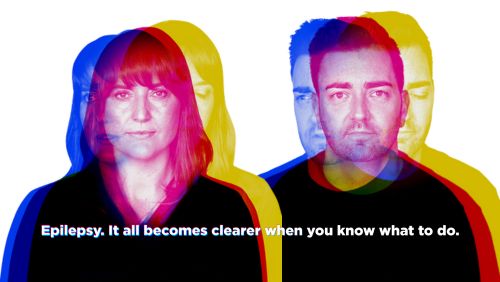
Some things are just clearer when you know what to do. Epilepsy and seizure first aid are no different.
This International Epilepsy Day 2025, we are highlighting how seizure first aid becomes clear when you remember TIME, SAFE, STAY. But what do we mean by TIME, SAFE, STAY?
TIME
The first thing you should do is TIME the seizure. This is because if a seizure goes over five minutes, an ambulance should be called.
Note that convulsive seizures typically last less than 2 minutes. The person’s body may go from jerking into what looks like sleep; this is normal and classed as the recovery period. If the person’s body is still seizing (jerking) at 5 minutes, an ambulance should be called as this is classed as an emergency.
SAFE
Keep the person SAFE during the seizure. If a person is having a convulsive seizure, cushion their head with something soft if possible and remove any harmful objects, e.g. furniture from their vicinity. NEVER put anything in a person's mouth or restrain them during a seizure.
Be aware that there are also types of seizures where the person does not experience convulsions. Instead, they may “zone out” or stare blankly, become confused or agitated, display behaviours like chewing, smacking their lips, tugging at their clothes, or wandering aimlessly. In this type of seizure, the person’s awareness of their surroundings is affected, and it is important to gently guide the person away from any danger. As with convulsive seizures, never restrict the person’s movements.
STAY
During the seizure and after it passes, STAY with the person. Often, after a seizure, a person with epilepsy will be confused and in many cases, exhausted. Stay with them until recovery is complete, explain what has happened and gently reassure them. The person may have experienced an injury if they have fallen, so, ensure normal first aid steps are taken.
TIME – SAFE – STAY makes it clear on how you should respond to a seizure!
Be clear on when to call an ambulance….
- Call an ambulance if the seizure lasts for more than 5 minutes.
- Call an ambulance if a person having a seizure briefly comes out of it and goes into another one. This ties into point one. Both scenarios are potentially very dangerous for the person, so they need expert care.
- Call an ambulance if you know it’s a person’s first seizure or if you’re not sure whether the person has epilepsy or not (often a person with epilepsy will have a bracelet or card in their wallet/purse indicating they have epilepsy.)
- Call an ambulance if the person is physically injured e.g. if they have taken a heavy fall during their seizure.
- Call an ambulance if the person is pregnant as a precautionary measure in case any checks need to be carried out.
- Call an ambulance if you’re in any doubt – this is the most important point of all. No–one is going to be annoyed at you for calling an ambulance out of real concern; not the person who’s having the seizure and not the ambulance crew.
Be clear on Epilepsy…
We want you to be clear on epilepsy this International Epilepsy Day with some quickfire facts.
- Epilepsy is one of the most common neurological conditions in Ireland, affecting over 45,000 people across the country – showing why we need to be clear about the facts!
- A person can be diagnosed with epilepsy at any stage of life
- There is more than one type of seizure – in fact, there are over 50 different types of seizure
- While causes can be identified for epilepsy in certain cases, in 50% of cases there is no known cause
- Epilepsy is much more than seizures - side-effects from medications; being restricted from driving; and societal stigma about the condition are some of the unseen challenges that people with epilepsy can face
- Epilepsy is extremely individual and there is no one size fits all approach to an individual’s treatment – a person may have to trial several medications or a combination of medications to achieve seizure control
- Epilepsy is most commonly treated via Anti-Seizure Medications, but there can be other interventions such as surgery in order to help treat a person’s condition
- Up to 70% of people living with epilepsy can become seizure free if the right treatment for their individual condition is identified. For the other 30%, the condition is more difficult to control.
- Epilepsy is not a barrier to employment – there are people with epilepsy working in all types of professions at all levels
These are just some facts about epilepsy, but you can continue to become clear about the condition by visiting the ‘Epilepsy Information’ section of our website.
Be clear on the individual nature of epilepsy…
In the lead-up to International Epilepsy Day, we have shared personal stories and experiences from those living with epilepsy and those supporting a loved one living with the condition. They explain the lived experience of epilepsy better than we ever could so take a moment to learn more via the links below:
- Read Andrew's story on our website
- Read Daragh's story on our website
- Read Kevin's story on our website
- Read Luke & Michelle's story on our website
- Read Maisie Mae & Amy's story on our website
- Read Sadie & Pauline's story on our website
Be clear on Epilepsy Ireland…
Epilepsy Ireland are the National Patient Organisation representing people with epilepsy and their families in Ireland. Established in 1966, our vision is to achieve a society where no person’s life is limited by epilepsy. The key pillars of our work include:
- Providing Support and Information to people with epilepsy and their families
Across Ireland, our services team respond to circa 20,000 contacts per year, supporting people on their journeys with epilepsy – as well as hosting a range of targeted events not only for the epilepsy community, but the wider community as well. - Providing Training and Education about epilepsy
Every year, we provide certified training to circa 3,000 professionals across Ireland on Epilepsy Awareness and the administration of an emergency medication to stop prolonged seizures - Leading Awareness and Advocacy Campaigns about epilepsy
Campaigns like Epilepsy Day are vital in raising awareness of the condition in Ireland and is just one of several campaigns we lead across the year. We also seek positive policy changes for the epilepsy community in Ireland. For example, we successful campaigned for the expansion of the Free Travel scheme to benefit those who are deemed medically unfit to drive for at least a year. - Investing in Research
Since 2009, we have invested over €1.5 million in a range of epilepsy research projects aimed at learning more about the condition – investigating potential treatments and causes.
You can learn about all the above in further detail by browsing the different section of our website!
Be clear on how you can help support Epilepsy Ireland...
The work outlined above would not be possible without the generosity of the public and the efforts of our incredible volunteers through fantastic fundraising initiatives. You can help continue this work by donating via the button below – or you can get involved our fundraising efforts for Purple Day® 2025. Visit the ‘Purple Day®’ page on our website to find out more.
Epilepsy Ireland are Triple Locked, the gold standard for governance issued by the Charities Institute of Ireland. We also hold the IQ Quality Mark for small to medium organisations. Our annual accounts details how we use and generate our funds and are outlined in full on our website. Further information on all of this and more, can be found by visiting the ‘Governance’ section of our website.

